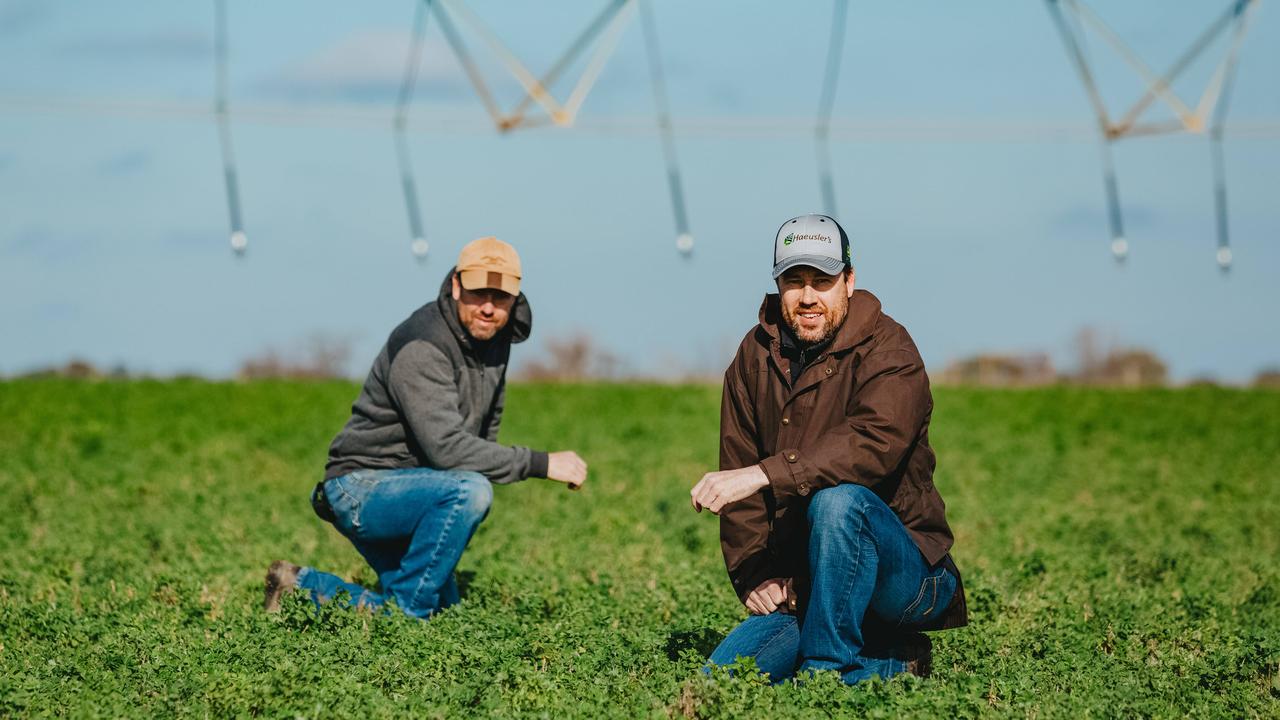Arnott takes the biscuit for regenerative agriculture
Biodynamics and regenerative practices are working a treat on Charlie Arnott’s 2000-hectare livestock property at Boorowa.

WHEN your surname is Arnott, it’s inevitable questions arise about Australia’s famous biscuit company.
While Charlie Arnott, the great-great-great grandson of the original biscuit founder, still gets the odd query about his ancestors, these days the focus is much more about his farming practices on his 2020-hectare property at Boorowa, in southern NSW.
“I always tell people I’ve gone from biscuits to beef, but I’m beginning to be known for what I do as opposed to my family history,” says the 46-year-old.
“I think because I’m passionate about the message of regenerative farming, what I’m doing and what other farmers are doing, and because my practices are more alternative or a little controversial, I’ve become better known as a farmer.”
That message and those practices will be under the spotlight this month, when Charlie hosts the From the Ground Up conference, organised by the Otway Coast Regenerative Farmers group.
Charlie defines regenerative agriculture as any practice that improves the ecological function of the landscape, whether it’s solar (photosynthesis), water, mineral, biological and even the human element (“happiness”).
“It’s about replacing man-made inputs with natural ones and working with nature’s abundance, about building the quality and quantity of soil,” he says. “As farmers, it’s our job to unlock that abundance.”
But, he adds, it’s not an “all or nothing” approach.
“I went cold turkey over one year, but that can be scary for some farmers, so small steps can be the best,” he says. “So if, for example, you’re spending $500 on synthetic inputs per acre, then spend $450 and the extra $50 put into regenerative practices, such as a biodynamic fertiliser. Make it an experiment without a lot of risk or cost.
“It’s not a case of, ‘if you don’t do it 100 per cent, you can’t call yourself a regenerative farmer’.”
“If you spend that $50 and you get the soil biology right, you’ll find you won’t need the crutch of urea, for example, because you’ve unlocked the natural nitrogen.
“The outcomes will give the confidence to keep going.”
Charlie speaks from first-hand experience.
When he returned to take over the family farm in 1997, it was run conventionally.
After he attended a one-day regenerative farming workshop, he began questioning convention, switching to alternative practices in the mid-2000s, including biodynamics, organics (not certified), and holistic management.
“There are lots of different tools you can use in regenerative agriculture, biodynamics is just one. There’s no prescribed formula or rule book,” he says.
He now runs 250 self-replacing Shorthorn cattle, about 10 breeding sows including Wessex Saddleback, and a flock of 1000 Merino Dorset-cross ewes, with meat largely sold through his Charlie Arnott Grass Fed Meat Naturally brand.
Charlie also runs two-day workshops — up to 12 per year — teaching farmers about biodynamic principles. He says the switch from conventional to regenerative sold itself. Input costs dropped by about a third, and animal health improved, without the use of vaccines or drenches.
Thanks to practices such as holistic management, fodder costs also reduced, not buying in supplementary feed, despite the current dry conditions.
“Our fodder is in the paddock, not in the shed,” he says.
Charlie says one of the greatest benefits was in reduced stress: because input costs are not as high, cash flow is more stable.
“One of the first things that has to change is what I call the paddock between your ears, it’s about changing your psychology,” he says.
“A survey of regenerative farmers found on the whole they have a higher sense of wellbeing compared to conventional farmers because they felt more in control of their business. They focus more on what they can control and not on what they can’t.”
SOWING SEEDS
COLAC
The Otway Coast Regenerative Farmers’ three-day From the Ground Up conference will be hosted by Charlie Arnott, who will talk about on his own regenerative farming story. The conference will examine the fundamental principles of regenerative agriculture, with presentations, panel discussions, field visits, and experts including soil specialist Dr Christine Jones, pasture cropping creator Colin Seis and Tammi Jonas from the Australian Food Sovereignty Alliance. September 18-20.


